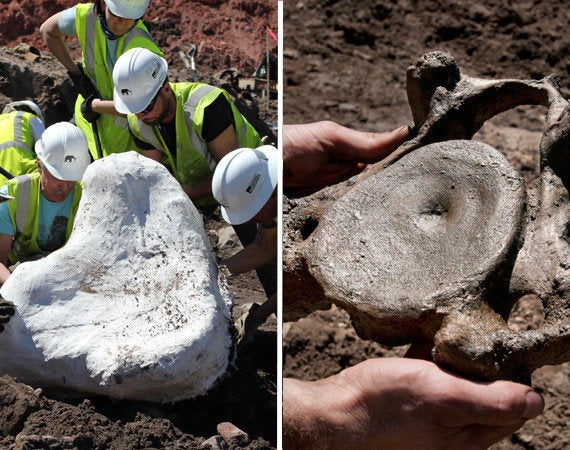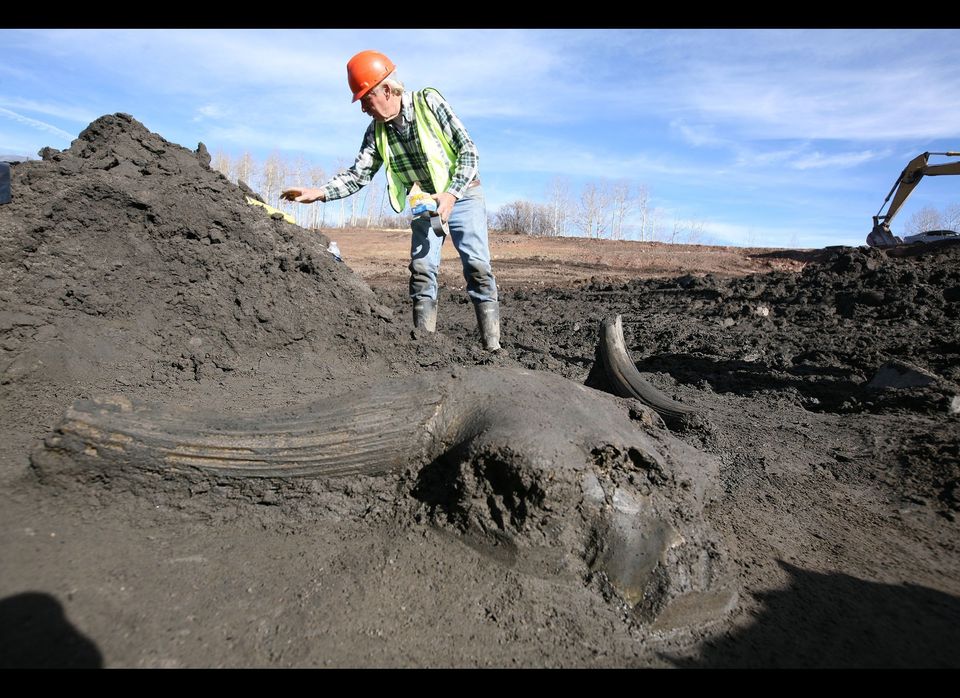
The National Geographic Society plans to feature the Snowmass Ice Age-finds on PBS as part of a NOVA special airing on PBS next year.
A crew of more than 50 people have been busy excavating the site for seven weeks, and revealing more than 1,700 Ice Age fossils. Sporting trendy-looking hard hats with a mammoth silhouette displayed on their foreheads, the crew divided itself into four teams to tackle their "No Bones Left Behind" challenge.
Tuesday marked the halfway-point in the excavation process and the group has to wrap up their finds--literally, wrapping the largest fossils in casts of plaster--by their July 4 deadline. Dr. Kirk Johnson, the chief curator and vice president of the Research and Collections Division at the Denver Museum of Nature and Science told HuffPost they signed an agreement with the Snowmass Water and Sanitation Disctrict, which owns the Ziegler Reservoir-turned-dig-site.
National Geographic has invested a $55,000 grant dedicated to the Snowmass project, and just announced today that they plan to include details about the dig in their award-wining magazine and the National Geographic-NOVA special on PBS, though the deadline still stands.
Dr. Johnson said in a press release:
Our goal is to remove 50 percent of the bones by the end of this week. We worked closely with engineers who staked out the exact locations to dig and expose the ancient lake bottom, where most of the fossils are located. The landscape is changing daily as we pull out tons of dirt and incredible numbers of fossils.
Dam construction is scheduled to begin in the reservoir immediately after the archeologists' dig deadline. Any undiscovered fossils by then will have to wait, biding their time in the earth as they have done for thousands of years.
According to a report by the Snowmass Sun:
The state owns the fossils, and the museum is the repository for them, but the district has a legal obligation to not knowingly destroy fossils in the process of enlarging the reservoir and constructing a dam. An agreement between the museum, Water and Sanitation District and the State Historical Preservation Office establishes the window for the museum to extract fossils that might otherwise be destroyed, Johnson explained.
The average mastodon pelvis weighs about 150 pounds, and increases to 400 pounds once the fossil is surrounded by a plaster jacket to protect it for removal. An average mastodon skull weighs up to 600 pounds before it is jacketed.
